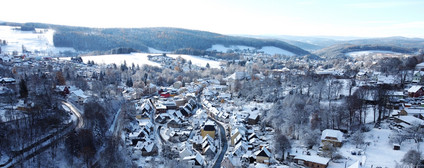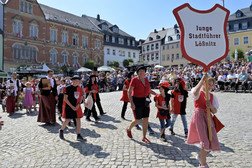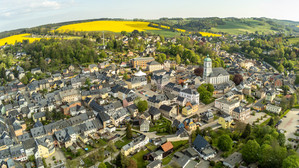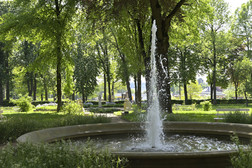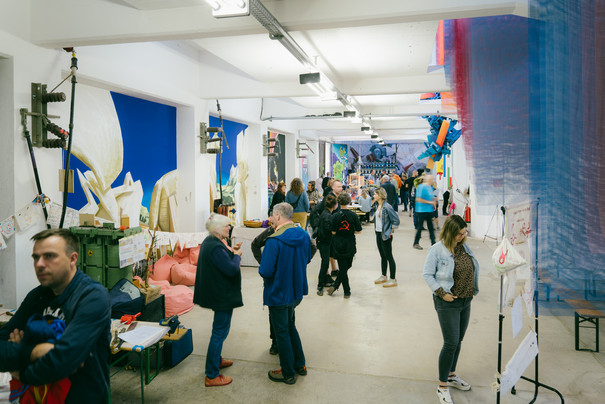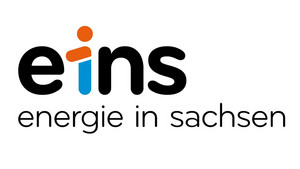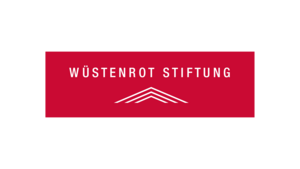The mountain town of Lößnitz was founded as early as 1170 and was first named a town in 1284 - making it one of the oldest settlements in the region and earning it the nickname "Muhme" (old aunt). Thanks to its favourable location at the crossroads of the salt and iron roads, Lößnitz developed into a lively trading and craft town in the Middle Ages and one of the most important towns in the Westerzgebirge. Remains of the mighty town wall and the large market square still bear witness to this time - and the annual salt market with its historic salt procession in honour of the salt privilege is a reminder of this. Every day, the carillon of 23 bronze bells rings out over the town from the tower of St John's Church in Lößnitz, the largest neoclassical church building in the Ore Mountains. The lime tree avenue with 200 lime trees over 200 years old is a unique natural monument.
Visitors to the town, which today has around 7,800 inhabitants, can explore the "historic salt route" and the history of mining and slate quarrying via hiking trails and nature trails. The latter is commemorated by the Affalter Nature Hostel in the district of Affalter - a former slate quarry hut of the saxony Schieferbruch-Compagnie. Where slate was once split into slabs, guests have been staying here since the 1920s and can enjoy the herb garden, tree house, forest kitchen, orchards and wood, felt and ceramics workshops. Lößnitz is also located on the "Silberberg" Way of St James along historic trading routes between Annaberg-Buchholz and Kirchberg. But beware: it is still over 2,400 kilometres to Santiago de Compostela. If you stay in the area, you can enjoy the Lößnitz ski area in winter with a 500 metre long downhill piste.
Uli Aigner: One Million Item 3501 and 3502
Art and sculpture trail PURPLE PATH
The monumental porcelain sculptures numbered 3501 and 3502 of the series One Million by artist Uli Aigner can also be seen as a tribute to kaolin mining in Bad Schlema in the Ore Mountains. The extraction of the ‘white gold’ in the 17th century led to the founding of the Meissen porcelain manufactory and industrialisation. The artist was born in 1965 in Gaming, Austria. She now lives in Berlin, Germany.
